Major General Andrii Sokolov was in charge of the defence of Ukraine's south. An interview covering Chonhar, Kherson and Melitopol
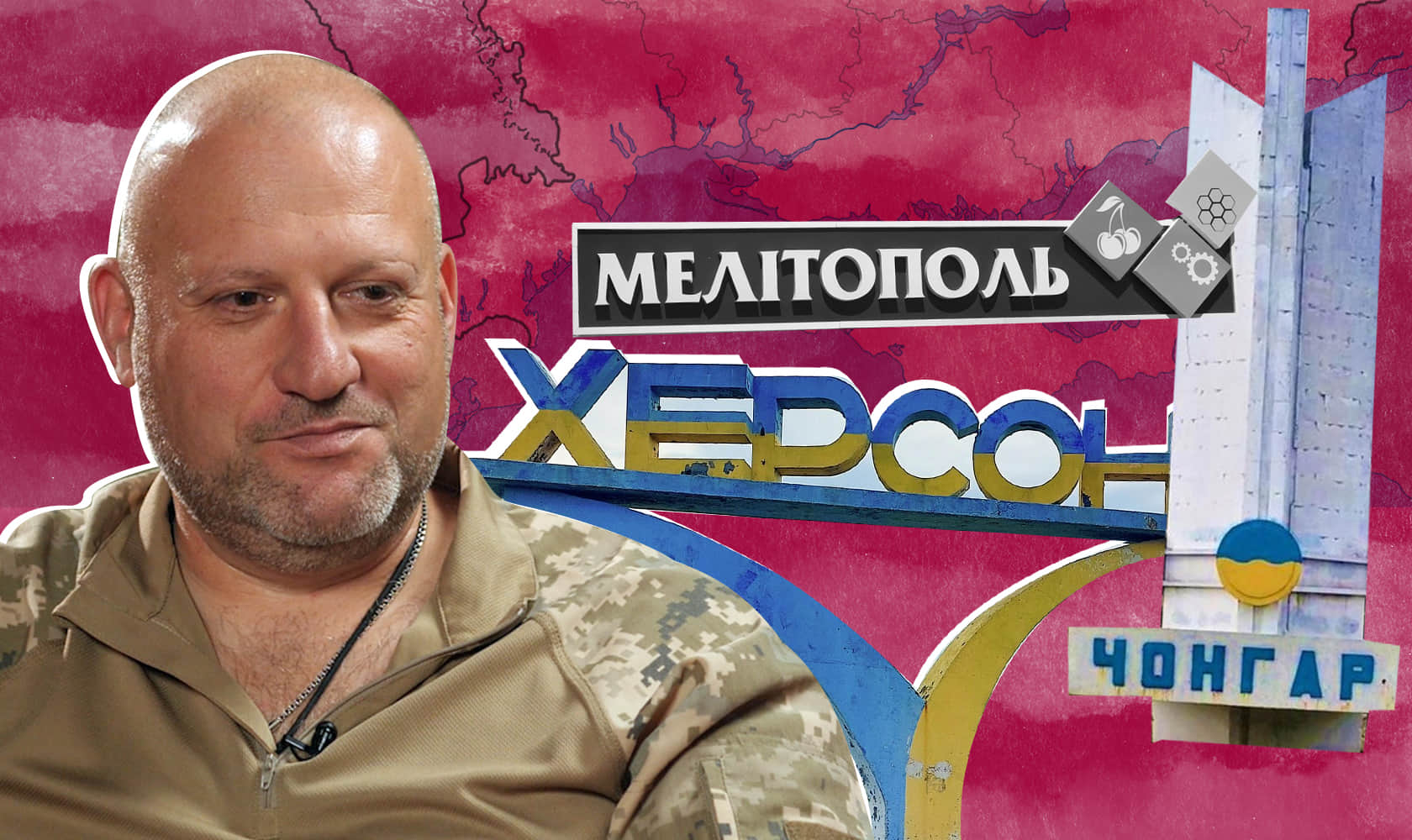
What was it that allowed the Russians to capture Ukraine's south, occupy Kherson and open up the way to Mariupol in a matter of days? Why hadn't the infamous bridges connecting mainland Ukraine and Russian-occupied Crimea been blown up?
These questions have been simmering online and in the media since Russia’s full-scale invasion of Ukraine started. The Ukrainian authorities have only vague answers to offer: an investigation is ongoing. Meanwhile, opponents of Ukrainian President Volodymyr Zelenskyy are broadcasting their own guesswork about who demined Chonhar.
Seeking answers to these questions, in July 2023, Ukrainska Pravda found and interviewed one of the main eyewitnesses of those events, Ukrainian marine Ivan Sestryvatovskyi. He was on duty at Chonhar in February 2022, and he was the person who was supposed to blow up the bridges there.
Sestryvatovskyi said they were mined. He had tried several times to trigger the mechanisms, which is why he had no time to leave with his brothers-in-arms and was captured by the Russians. The explosive devices never went off. Sestryvatovskyi assumed that the reason for this must have been either heavy Russian fire that damaged the wires, or sabotage groups.
It was only after we interviewed him that Sestryvatovskyi was questioned by the official investigation, even though it has been going on since the spring of 2022.
Ukrainska Pravda's sources in Ukraine's law enforcement agencies said the investigation is being conducted by the State Bureau of Investigation (SBI) and the Security Service of Ukraine, which report to the Ukrainian President's Office. Law enforcement officers are looking into the actions of the military: specifically, the fact that the command supposedly failed to properly mine all bridges and other structures.
According to Ukrainska Pravda’s information, the key actors in this case may be Lt. Gen. Serhii Naiev, Commander of Ukraine's Joint Forces, and Major General Andrii Sokolov, Commander of the South Group of Forces since October 2021 and at the beginning of the Russian invasion.
We continue to retrace the events of the early days of the war in Ukraine’s south. To do this, UP has interviewed and compiled the memories of the soldiers who led and took part in the defence and controlled the mining of bridges. We have gained access to unique data from the Ukrainian military, as well as Russian maps and plans.
We will shortly be publishing a major piece on what happened in the south of Ukraine on 24 February.
In the meantime, Ukrainska Pravda spoke to Major General Andrii Sokolov, who was in charge of the southern front. We discussed how the defence was organised, why it failed to withstand the Russian invasion, what could have fixed it, and whether anything on the border with occupied Crimea was mined.
"The defence plan envisaged four brigades. I only had one"
Andrii, let's go back to late 2021, early 2022. Back then, there were a lot of media reports about the Russians preparing a full-scale offensive. And Kyrylo Budanov, Chief of Defence Intelligence of Ukraine (DIU), said in the autumn of 2021 that the south was likely to be one of the main invasion areas. How seriously was this information taken? What preparations were being made at Operational Command Pivden (South)?
When I assumed the position of commander of the group of troops [in October 2021 – Ukrainska Pravda], I arranged scheduled training from day one. An exercise was planned with the 137th Battalion, who were guarding the border with the Autonomous Republic of Crimea at the time.
Training sessions were also planned for the staff. The staff was not permanent; it was appointed from the officers of the Ground Forces Command. These were different people with different backgrounds and experiences who lacked coordination.
After the situation deteriorated and the enemy began to concentrate their troops in Crimea, the units that were supposed to perform the tasks of defending the South were briefed sometime in mid-January 2022.
This involved a practical field exercise, and the tasks, withdrawal routes and defensive lines were clarified. Everything was planned and carried out.
And just before the invasion, we were planning to hold command and staff training in about a week, in mid-February. All the troops under our command at the time were to be involved.
Was this training carried out?
Unfortunately, we couldn't make it as large-scale aggression began. We postponed it for about a week as the situation was getting worse.
How many Ukrainian troops were concentrated in your area as of 24 February?
The South group worked on a rotational basis, meaning that some people would come and then be replaced by other people. Considering the total number of combat units, at the time of the invasion, there were about 1,500 people.
Specifically, the 59th Brigade had roughly 1,300 personnel. Why so few? Because the brigade had left the Joint Forces Operation area in December and was restoring its combat capability. [Joint Forces Operation, or JFO, is a term used from 2018 onwards by the media, the Ukrainian government and the OSCE to identify combat actions against Russian military forces and pro-Russian separatists in parts of Donetsk and Luhansk oblasts – ed.] That recovery process had not yet been completed when they were assigned to our group.
They were moved to the Oleshky Sands training ground. The brigade was about 60% staffed.
The artillery was also understaffed because two divisions had been exercising in Divychky [a training ground in Kyiv Oblast – UP], and the engineering support group, i.e. sappers, had been undergoing training in Kamianets-Podilskyi.
In addition, there were about 250 people in the 137th Marine Battalion, which was also at 50% strength. Some of these 250 people were conscripts engaged in stabilisation operations on the border with Crimea.
What are stabilisation operations? They were stretched out over an area up to 200 km long, at observation posts along the entire border, and monitoring the Russians’ activities to ensure there was no illegal crossing.
And only a tiny part of them – about one platoon [15-45 people – UP] – was located at the strong point directly in front of the Chonhar bridge. Before [you got to] the platoon, there was a strong point near the Kalanchak checkpoint too. Another platoon strong point was near the village of Kairy – at the Chaplynka checkpoint, opposite the Titan [chemical] plant.
Three strong points: that was what the enemy first encountered on day one [of the war].
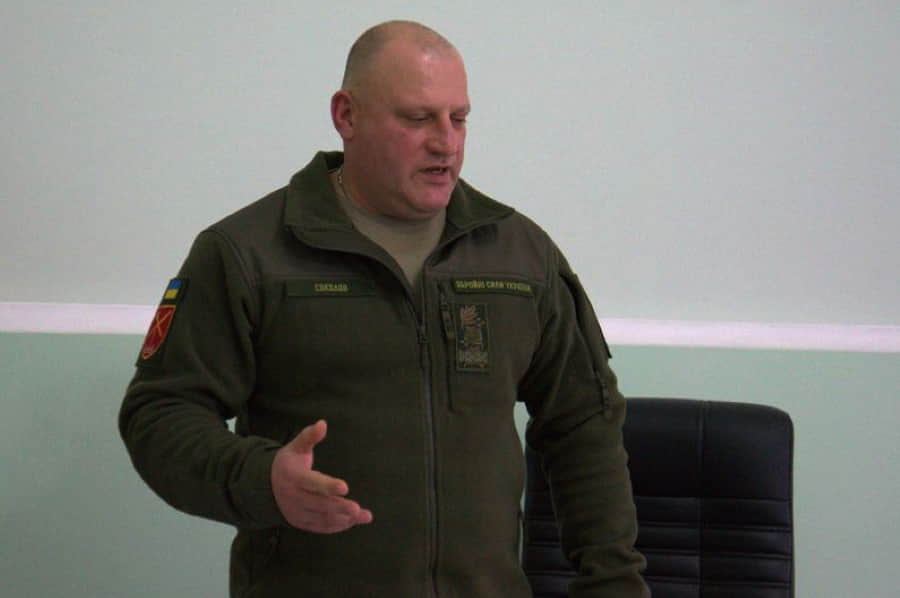
Why were there so few troops in the south? Were these 1,500 people enough for your area?
It obviously wasn’t sufficient even for a stabilisation operation.
During escalation, the plan was to have up to two brigades: one on the Kherson front to carry out tasks and stabilisation activities, and one on the Melitopol front. One battalion was to stand directly on the border as a forward unit.
I didn't even have those forces; I had only one brigade.
There wasn’t one single brigade on the Melitopol front?
There were no forces at all on the Melitopol front. I sent my reserve there, a tank company, to cover it somehow.
Was that during the invasion or before?
Before. I sent them to the area about a week before the invasion, realising that no one was covering it.
Was the issue of expanding the group raised?
Of course it was.
Why didn't it happen?
Most likely, there were not enough assets and personnel. The enemy concentrated their troops in an extensive stretch from Belarus to Crimea. There were not enough forces, and we had to keep troops in the Joint Forces Operation area, cover Kyiv, cover the North, Slobozhanshchyna [northeast Ukraine], and the Kharkiv front. I think that was why we didn’t have enough forces.
How high up did you report that there was likely a lack of strength in the south?
I reported to the Joint Forces Commander [Serhii Naiev – UP], as is customary.
Do you know whether the president was informed about this?
I don’t know.
You had these 1,500 people under your command for an area that was 200 km long. How many were supposed to be on the staff list? How bad was the shortfall?
It was a group for stabilisation operations. If the Russians deployed sabotage groups and illegal formations, if the situation developed as it did in the east in 2014, two brigades were assigned to us.
But there was a separate plan for defence. That involved four brigades: two mechanised/combined arms brigades and two Territorial Defence Forces (TDF) brigades. You see: four brigades in the plan and one brigade in reality. This obviously wasn’t enough.
When did you realise that you probably shouldn't rely on the TDF for help because there were just too few of them and they had big problems with supplies?
I didn't count on the TDF at all, as we never got them. There were supposed to be two brigades: Kherson and Zaporizhzhia. They weren’t even staffed at the beginning of the war. The brigades existed, they’d been formed, but there was never an order for them to be staffed, sent to us and deployed.
I assumed command of the Zaporizhzhia 110th TDF brigade at the end of the day on 24 February.
What about the Kherson Brigade?
The Kherson Brigade was never put at my disposal. As far as I know, it hadn’t been staffed at that time.
"I’m sure the Russians cleared the minefields with artillery"
Let’s talk about 24 February in more detail. How did you find out that the Russians had started the war?
On the first day of the war I was at my command post in front of the monitor with a Virazh Tablet opened. This is a program which tracks the flights of all the aircraft around you.
We were there with the head of the air defence, the operative on duty. First, at about 04:00-05:00, we saw a massive amount of aircraft take off in Crimea. We tried to count them, but lost count at the thirtieth aircraft.
They circled over the territory of Crimea at first, maybe they were building a battle formation there. There was still hope that they would fly a little way and then land at their airbases, since it wasn’t the first time this had happened. But they flew in different directions over the Sea of Azov and the Black Sea and carried out a mass missile launch.
First, missile attacks were launched on almost all the location points of our units, command posts, starting positions and air defence command posts, as well as on the airbase in Melitopol. Almost all the facilities located in Kherson and Zaporizhzhia oblasts were attacked.
After that, Colonel Rymarenko, Commander of the 137th Battalion, reported that the enemy had opened fire and artillery attacks on our frontline positions at the Kalanchak and Chonhar entry-exit checkpoints (EECPs). That’s how it all started.
But there was this nuance. On 23 February we’d received information that the Russians might be going to carry out a provocation: they’d strike the Titan plant themselves, blame us for it, and use it as a casus belli to start conducting some actions against us.
The report from the commander of the 137th Battalion was the first one to say – I remembered it well – that the enemy wasn’t attacking the actual positions: they were firing in front of our strong point opposite the Titan plant.
At first I thought that that was what was going on, that it was a provocation and they were attacking the plant. It was night-time, and the personnel were just disoriented.
Then, when I’d analysed all their actions, I realised that they were clearing the minefields in front of our platoon strong points with rocket artillery. The second massive attack was on our positions.
As far as I understand, the 59th Brigade was ordered to head to its defence lines on 23 February. Was that related to potential provocations? Or were you expecting a full-scale offensive on 24 February?
We were always getting prepared for the war. On 23 February I received an order to lead a brigade and go to the defence lines. Before that, the brigade was combat-ready at the training ground near Oleshky. It was preparing to hold the defence, was supplied with ammunition and had received orders concerning combat missions.
On 23 February I received the order to go out to the defence lines and I gave it to them. But unfortunately, they didn’t manage to do it.
So there were no prepared positions on the defence lines they had to go to?
No, there weren’t. This is also quite a complicated issue, because Luhansk and Donetsk oblast had had a special status [since 2014], and defence lines had been built there. It wasn’t just the military that worked on it – in each of these regions, an area was selected where the second and third lines of defence were constructed.
But Kherson Oblast hadn’t had a special status since 2014. Those defence lines had to be constructed on someone’s land, so the land had to be acquired. No such decision had been made. That’s why it was so challenging.
Some positions had been equipped before me in forest plantations where the land did not belong to anybody. I equipped the positions of the artillery and air defence units with the forces I had. The positions taken by the 137th Battalion directly on the border with Crimea were equipped, and we were constantly improving them.
Defence positions in the rear basically only existed on paper.
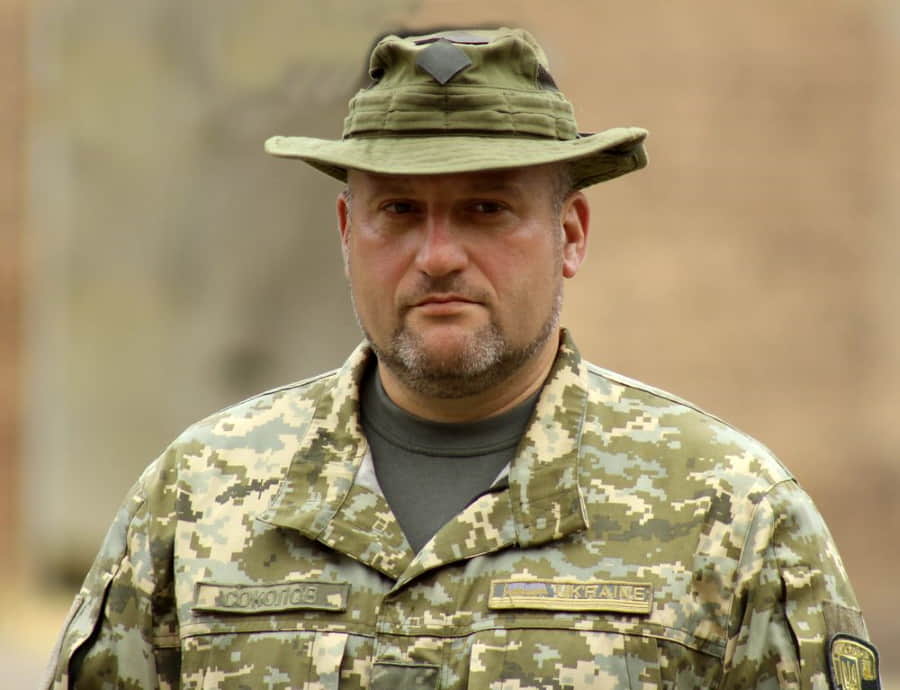
But how did it happen that the bridges were not blown up? There are about ten of them there besides the Chonhar bridge itself, if I’m not mistaken?
All the bridges and dams are located on the Chonhar peninsula on the Melitopol front. There are no bridges on the other fronts – Kalanchak and Kherson. There are two land isthmuses there: one in the direction of Chaplynka, the other towards Kalanchak.
Why weren’t the bridges blown up? We know from the interview with Ivan Sestryvatovskyi, the soldier from the 137th Battalion, that attempts were made to blow them up. But the enemy understands the importance of both bridges and crossings and therefore takes measures accordingly.
From my experience I can say that bridges have to be blown up before the enemy approaches them, when they don’t have fire control over the bridges, not when they are already in front of them. Then there is some hope that the mission will be 100% performed.
When the enemy is already in front of the bridge, they can use fire and sabotage groups to impact the bridge itself, and the explosives, and those who are supposed to be blowing it up.
The bridge at Henichesk, on the Arabat Spit, was blown up – partially, but it was blown up. A sailor from the 137th Battalion [sapper Vitalii Skakun] had to sacrifice his life there to complete that mission.
Why didn’t he manage to retreat from the bridge?
As far as I know, the enemy was already launching attacks to try to prevent the bridge from being blown up. The sailor was killed by enemy fire as the enemy was attacking, and it all blew up together.
Did you remove any mine barriers before the full-scale war? Was any mine clearance done under any peace agreements?
Regarding peace agreements, it’s hard for me to say. Everything had remained unchanged on the border with Crimea since the summer of 2014, when it was constructed.
But the bridges in the rear, over the North Crimean and Kakhovka Canals, were mined as well. They were mined back in 2014 when there were far more troops there. And it was due to this group of troops that the mines remained, because a mined bridge cannot be left unsupervised in civilian territory.
The quantity of troops decreased over time, from 2015 onwards, because troops were needed in the Anti-Terrorist Operation area, and then in the Joint Forces Operation area. Some of these sites were cleared [of mines] because there was no one to guard them.
All ammunition was stored at Chaplynka. When the full-scale war began, I gave an order to urgently get ammunition and blow up the bridges over the canals. Our troops managed to blow up some of them, but not others as the enemy had already approached them.
Roughly when were the bridges in the rear demined?
I don’t know. When I was first appointed, in 2018, the ammunition was already in storage.
So mine barriers weren’t removed from all the other bridges – Chonhar, Henichesk?
No. It had remained unchanged since 2014 when the minefields and mine barriers were set up.
Is the military responsible for removing the barriers? Could the civil authorities have done this?
The military is, of course. The civil authorities didn’t have access to the barriers or the minefields. But I, for instance, couldn’t have slowed the mine clearance down myself. I’m not authorised to make such decisions. So I didn't do it.
Do we know what the situation with minefields was like? Were any Russians blown up there? Some people say that someone was apparently helping them there so that they could get around them.
Do you think minefields in peaceful territories where civilians live are retained? They were marked on the ground so that no one would wander there by accident. They were marked with a special cordon and special signs.
So all the local residents knew about these minefields. I’m sure the enemy did as well.
Next. The asphalt roads could not be mined. They were constantly used to cross the border with Crimea, people and cargo travelled along them. They were not mined. They were prepared, and explosives stored in Chaplynka were prepared for them as well. Mining was planned, but it didn’t happen as no command about further mining was received.
Who was supposed to give that order?
I should have received it from my superiors.
You’re saying you saw the artillery striking minefields. So the Russians were deliberately conducting mine clearance and making their way easier?
I’m sure of it. I’ve been on the front line since 2014. They’ve done it many times. I’m sure that’s exactly what they did that time as well.
"A strategic defence line on the Dnipro River should have been set up before the war"
When did you realise you had to order your troops to retreat? When did you see that neither the 59th Brigade nor the 137th Battalion could physically hold back an offensive by that number of enemy troops?
Regarding the 137th Battalion, everything had been discussed in advance and planned during our monthly training. Their task was to report that the enemy had started the offensive, blow up some facilities, and retreat to a predetermined cluster area.
They basically didn’t even need an order, they were prepared for this. Orders were given, but there was a problem: radio contact was interrupted right away.
Was the enemy’s radio-electronic warfare effective?
I can’t say. Maybe there were indeed some sabotage groups that put the repeaters out of order, maybe it was radio-electronic warfare in action. But there was no radio contact – it was suppressed.
We only managed to receive information and give orders thanks to our mobile connection, via WhatsApp.
I realised the war had started after I saw an extensive missile strike on our units. There was still a possibility that the enemy wouldn’t launch ground operations straight away but would lead with a day or two of large-scale missile and airstrikes. That’s one way of waging warfare.
But very early on, the commander of the 137th Battalion reported that convoys of enemy mechanised equipment were advancing towards us across the border. So I gave them an order to act in accordance with the withdrawal plan. Those who didn’t receive my order acted on their own. This had all been planned and discussed ahead of time.
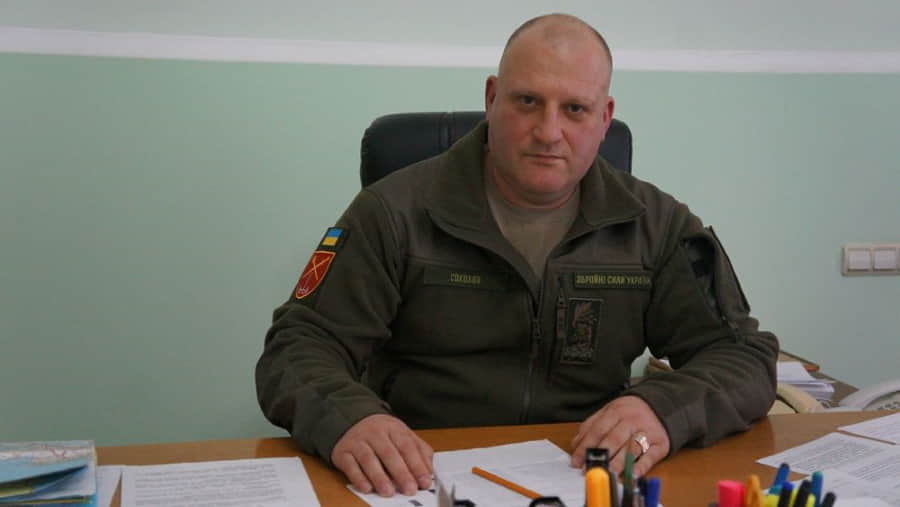
What about the 59th Brigade?
Unfortunately, the 59th Brigade never managed to deploy to their defence positions – they ran out of time. When the war started, they were at military training ground No. 241 in Oleshky.
When I realised that they wouldn't have time to deploy to their positions because of how fast the enemy was advancing, I ordered them to take up defence positions right where they were. They partially complied, but enemy forces also partially pushed the brigade out to the right bank [of the River Dnipro].
How many Russians were advancing on southern Ukraine?
Around 25 battalion-tactical groups.
How many people is that?
Up to 20,000 military personnel.
But that’s not necessarily the right way of counting because it doesn’t take into account the commanders and the larger formations which have artillery, air defence systems, intelligence and engineering units, and electronic warfare systems. We have to take that into account.
We were facing the entire 22nd Army Corps, at least one division of the 58th North Caucasus Army – the most well-trained one – and around half of the 7th Air Assault Division.
That’s a lot. That’s artillery, and all the other weapons they have. Plus the Air Force, around 140 aircraft and 60 helicopters, and the ships from their Black Sea fleet.
By how much did the Russians outnumber our forces in terms of equipment and artillery?
It’s difficult to give an exact number, but I can say that they definitely outnumbered us both in terms of personnel and equipment.
According to the numbers you cited, [the Russian forces outnumbered the Ukrainian forces by] at least 20-25 times.
Yes, and they also did in terms of artillery, and aircraft, and helicopters.
How quickly did they disable our air defence systems?
I’m not sure how quickly it happened, but the air defence forces didn’t really do much on the first day [of Russia’s full-scale invasion]. The enemy forces had total advantage in the air – nothing hampered their advance.
Moving on. What was supposed to happen with the Antonivka and Nova Kakhovka bridges when the 59th Brigade started withdrawing to the right bank? Were they supposed to be blown up or not?
The River Dnipro is strategically significant. It was supposed to be a strategic defence line, and a different military unit was supposed to be in charge of it. Because given the resources we had, it was unrealistic, to put it mildly, to hope that our group of forces would be able to hold enemy forces back in Kherson Oblast and then also prevent them from crossing the Dnipro.
A strategic defence line should have been created there, at least in places – near the Antonivka bridge and the Nova Kakhovka dam – without relying on our small group of forces. That should have been done in good time, before the war.
Why wasn’t it done? It’s difficult for me to say. The stabilisation operation plan specified that I was responsible for that side, because it’s still part of Kherson Oblast.
But the enemy had started this war. According to the defence operation [plan], that wasn’t my territory. My territory was on the left bank of the River Dnipro. I didn’t have the personnel or equipment I needed to carry out a stabilisation operation, let alone defence.
Who was supposed to control the right bank?
I don’t know. These are strategic plans.
There was nothing I could have done with regard to rigging the bridges in Kherson with explosives because I didn’t even have any explosives to do it. I’d also have needed special equipment, as well as time and people.
So the bridges over the Dnipro were not mined?
No, they weren’t.
We have a sense that [the Russian offensive unfolded across] two fronts: [they were advancing] on Kherson and Melitopol. The 59th Brigade was supposed to defend the Kherson front; it engaged in battle on the Antonivka bridge. What happened on the Melitopol front? As far as I understand, the 137th Battalion was there. Were they there on their own or did they get reinforcements?
There wasn’t a brigade assigned to the Melitopol front. I had to deploy a battalion of the 59th Brigade to hold the fort there, the 9th Motorised Infantry Battalion, the brigade’s best battalion at the time. I chose it because its commander was very experienced (unfortunately, he was later killed near Zaporizhzhia) and the battalion itself was better prepared.
But it also failed to reach [the Melitopol front] in time and take up defence positions there. It was encircled almost as soon as it set out. We then helped them escape the encirclement for Vasylivka [in Zaporizhzhia Oblast – ed.] together with soldiers from the 137th Battalion. They were encircled once again during the defence of Vasylivka, and once again had to find a way out.
So no other groups of forces were deployed to reinforce the Melitopol front?
By the evening of 24 February [2022], we had to transfer the headquarters – first to Velyka Lepetykha [a village near Nova Kakhovka – ed.], according to the plan. I then realised that we’d be encircled there too; we already knew that [Russian] landing forces had landed on the Antonivka bridge and that the bridge was under enemy control.
I pivoted on the fly. We went to Vasylivka, on the Melitopol axis, and remained on the Zaporizhzhia front.
By the end of the 24th, we were given reinforcements: a National Guard regiment, a public order patrol unit, and the 110th Brigade of the Territorial Defence Forces. We tried to gain a foothold. No one was controlling Melitopol at the time, so enemy troops were able to approach the outskirts of the city.
We managed to fire on some [Russian] convoys; our Uragan (Hurricane) multiple-launch rocket systems did a good job, firing on an enemy convoy. At night we marched from Vasylivka and entered Melitopol. Unfortunately, the forces we had – two incomplete National Guard battalions – were not enough. The 110th Brigade didn’t enter Melitopol because they didn’t even have any equipment.
Unfortunately, we weren’t able to hold Melitopol. Control over Melitopol was, as they say, there for the taking – anyone could have picked it up. There was no organised resistance, no defence.
The enemy entered Melitopol, and the National Guard units had to withdraw from the city. We later organised the defence on the Vasylivka-Tokmak axis, but we couldn’t hold it with the forces we had. So we retreated further, to Kamianske, I think [a village slightly further upstream from Vasylivka – ed.], where we finally gained a foothold.
"We didn’t have enough personnel. We only had peacetime staff when the war started"
Let’s recap. A widespread opinion has it that Ukraine was expecting an offensive in Donbas. Given what you just said, [is it true that] we really didn’t expect aggression in the south?
No, I wouldn’t say that. We were expecting it, because we had considered the possibility of an attack from the south during training for commanders and military exercises. They acted in line with our expectations: their first objective was to capture the bridges and crossings over Dnipro; their second objective was [to capture] Melitopol and advance on Mariupol, to create a land corridor. They did exactly what we expected them to.
If this was expected, why do you think an appropriately sized group of forces was not created? Why was there a personnel shortage?
In my view, we didn’t have enough personnel or resources. We only had our peacetime staff when the war started. No additional military groups were created. We just had what we had.
Let’s count them: 12 brigades in the Joint Forces Operation area, five brigades in each tactical group of forces, and reserves. Meanwhile, the city of Kyiv and Kharkiv and Chernihiv oblasts also had to be defended. The southern front got whatever forces could be spared.
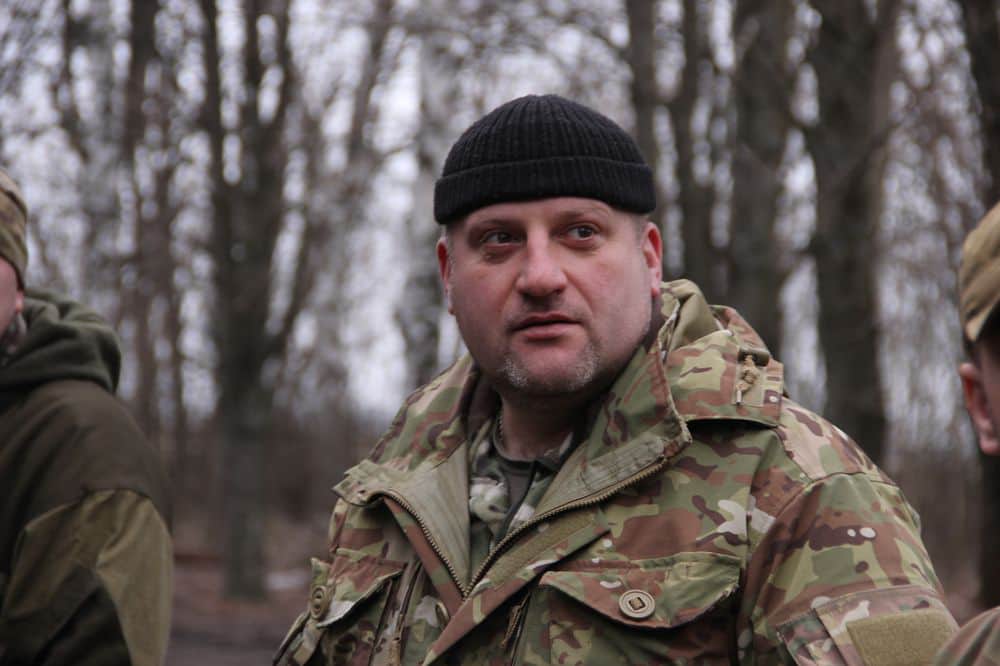
So what do you think could have been the main solution, or the only possible solution? Timely mobilisation?
I don’t think that’s the only solution. I don’t think it’s mobilisation alone. The Territorial Defence Forces could have been trained, they could have been taken to border areas under the guise of exercises. But of course mobilisation is key. Introducing martial law and announcing mobilisation is something that’s always done.
Now we know that the defence of Ukraine’s south isn’t just being discussed on social media; now there is also a criminal case – in particular, with regard to why the bridges were not blown up. When and how did you first hear that people had issues with how the defence of southern Ukraine was organised?
I’m not going to comment on rumours. But I’m aware that there is a criminal case. An investigator came to talk to me, in the area of hostilities. He interviewed me in my capacity as a witness – for now.
Did your commanders tell you that checks should have been carried out, that the defence might have been poorly organised?
I think that everything that’s happened has to be studied and analysed. Not only the things that happened in the south or early on, but also things that are happening now.
I’m sure that time and the public will be the judges of everything that’s happened. It will become clear who was right and who was wrong, who could have done something and who couldn’t have, and who should have done something but didn’t.
Sonia Lukashova, Yevhen Buderatskyi – Ukrainska Pravda
Translation: Artem Yakymyshyn, Polina Kyryllova and Olya Loza
Editing: Teresa Pearce